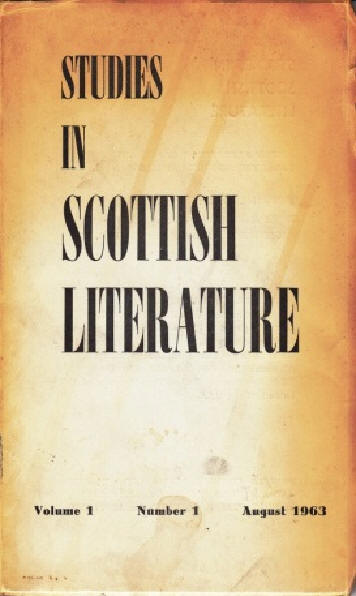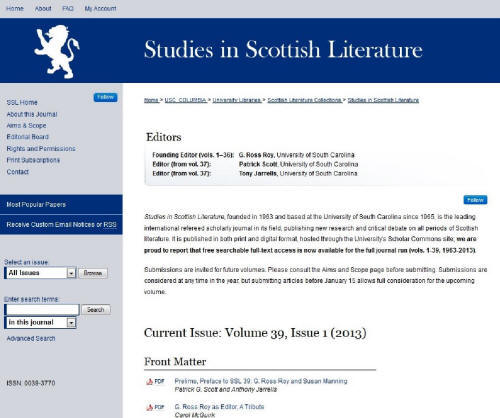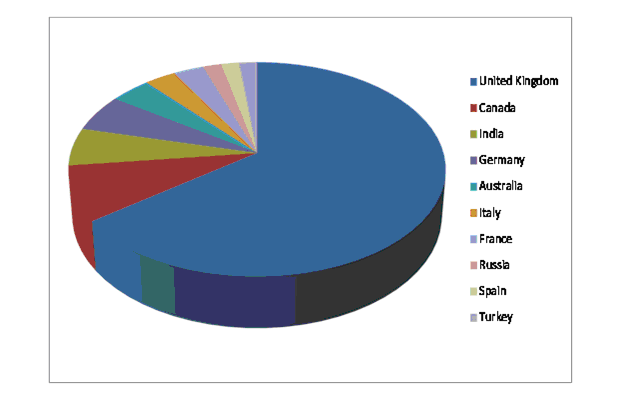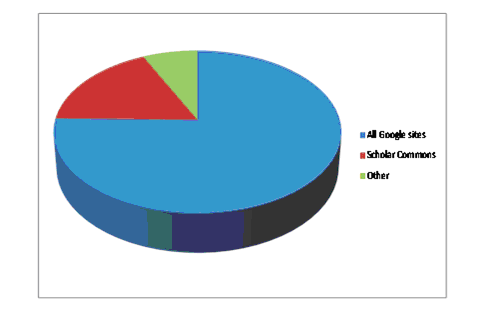|
Edited
by Frank R. Shaw, FSA Scot, Dawsonville, GA, USA
Email:
jurascot@earthlink.net
One of the most interesting
articles on Robert Burns I have ever read arrived on my desk a few hours
ago. Written by Dr. Patrick Scott (Editor,
Studies in Scottish Literature, & Distinguished Professor of English,
Emeritus at the University of South Carolina), the article presents the
works of global academics and the decision of those involved at the
university to digitize the Studies in Scottish Literature (SSL)
series. It is refreshing to learn that hundreds of articles written over a
half century are now available free of charge online. As a businessman, it
is easy for me to see some risk involved and while some would call it a
gamble, as Dr. Scott says, “it is a gamble in the Ross Roy tradition of
hospitality and openness.” Professor Roy was one of the most open and
transparent men I have ever known. His time was your time and his works were
eagerly shared with all who called on him. If he knew ahead of time, Ross
would do all he could to arrange his schedule to meet you whether you were
acquainted with him or not. I can imagine a smiling Ross as I write this
brief introduction.
The vast majority of universities charge fees for
their scholarly articles or they use a teaser by giving you a half-page or
so to read and then BAM! - the article is discontinued until you pay a fee.
This is not the case at the University of South Carolina which has the
largest collection of Scottish books, including rare books and manuscripts,
outside Scotland. The articles of SSL are yours for the taking so
please, download as many as necessary to meet your needs.
I commend Dean of Libraries Tom McNally, Patrick
Scott, Tony Jarrells, and Elizabeth Suddeth for their banner breaking news.
How refreshing! This is rare and enormously welcomed news in an age where
all of us are tired of being “nickeled and dimed” to death. I believe I knew
Ross well enough to say he would approve. (FRS: 3.25.14)
ROBERT BURNS, OPEN ACCESS,
AND THE DIGITAL STUDIES IN SCOTTISH LITERATURE
By Patrick Scott
Beginning in March 2014, the
whole run of Studies in Scottish Literature, including well over a
hundred scholarly articles about Robert Burns, has been made freely
accessible on the Web. The journal’s URL is:
http://scholarcommons.sc.edu/ssl/.
Now that the last remaining
twelve volumes have been added to what had previously been digitized, this
makes available 39 volumes, with over 800 articles and a total of over 7000
pages, published over a period of fifty years (1963-2013). This month also,
for the first time since the first volumes went up in late summer 2012, the
SSL web-site has reached a cumulative total of over 70,000 full-text
article downloads.
Digitizing SSL is
giving us new information about which Burns topics are of the widest
interest, who wants to read about Burns, and how they find the articles
about him. As the success of Robert Burns Lives! has shown, interest
in Burns through the Web is much greater and more widespread than anyone
could have foreseen. The completion of the SSL digitization project
seems a good time to step back and explore what it shows about current
interest in Robert Burns and his writings.
 It
is not surprising that Robert Burns has featured prominently in Studies
in Scottish Literature over the past fifty years. SSL was
founded in 1963, and edited till 2007, by the Burns scholar G. Ross Roy
(1924-2013), editor of the standard Letters of Robert Burns, 2 vols.
(Clarendon Press, 1985). In 2007, he had announced that he had edited his
last volume, and that the journal would cease publication, but from the fall
of 2010 he began making plans for it to continue under my editorship (but
see the next paragraph on this), and in July 2012 he transferred all rights
in the journal to the University of South Carolina Libraries, clearing the
way for new volumes and for digitization. It
is not surprising that Robert Burns has featured prominently in Studies
in Scottish Literature over the past fifty years. SSL was
founded in 1963, and edited till 2007, by the Burns scholar G. Ross Roy
(1924-2013), editor of the standard Letters of Robert Burns, 2 vols.
(Clarendon Press, 1985). In 2007, he had announced that he had edited his
last volume, and that the journal would cease publication, but from the fall
of 2010 he began making plans for it to continue under my editorship (but
see the next paragraph on this), and in July 2012 he transferred all rights
in the journal to the University of South Carolina Libraries, clearing the
way for new volumes and for digitization.
For the editorial side, I am
fortunate to have as joint editor Prof. Tony Jarrells, a Walter Scott and
James Hogg scholar in the English Department. Tony’s interest in Scottish
literature dates back to a post-doctoral research assistantship at the
University of Glasgow, and he has also been a visiting fellow at the
University of Edinburgh’s Institute for Advanced Studies in the Humanities.
Three new volumes have now
been published, both in digital form and in “guid black prent” as paperbacks
available through such on-line vendors as Amazon and Amazon UK. Articles on
Burns in the new volumes have included Stephen Brown’s essay identifying the
original printer of The Merry Muses and Marvin McAllister’s account
of “Scots wha hae” on the antebellum Harlem stage (in SSL 38), and
several reports on Burns manuscripts, including “The Poet’s Welcome” (SSL
38), Burns’s music for “The German Lairdie” (SSL 39), and two on
newly-discovered sources for Burns’s “patriarch” letter to his uncle Samuel
Brown (SSL 38, 39). Digitization lets us include images of each of
the manuscripts being discussed.
The digital version of SSL
has been mounted in the libraries’ Scholar Commons site, under the
supervision of Chris Hare of Library Systems. The Scholar Commons site is
an “institutional repository,” mounting a variety of papers and articles by
the University’s faculty members in many disciplines. The underlying system
and specialist support are licensed from Berkeley Electronic Press, and
their web designers incorporated SSL’s longtime logo of the Scottish
lion. Studies in Scottish Literature is the most successful journal
based on the University’s site, and month after month tops the statistics
for the most used portion of the site. The first stage of digitization,
reported earlier in Robert Burns Lives! Ch. 153, was funded by the
University Libraries. This new phase, completing digitization of the earlier
volumes, has been supported in part by donations in memory of Ross Roy.

Completing the digital site
is a landmark for us in re-establishing the journal after a five-year gap in
publication. We started by recruiting an expanded editorial advisory board,
and many of these advisors have also written for Robert Burns Lives!.
Previous Burnsian board members Ian Campbell and Ken Simpson agreed to
continue, and new members include such well-known Burns scholars as Carol
McGuirk, Murray Pittock, Gerard Carruthers, and Leith Davis. We have
revived a feature going back to the early years of the journal, when poets
like Tom Scott and Sydney Goodsir Smith argued fiercely (and wittily) about
the nature of Scottish literature. Each of the new volumes opens with a
symposium of short pieces discussing a current issue in the field. The first
symposium, on the Present State and Future(s) of Scottish Literary Studies
(in vol. 38), drew wide attention to the journal’s reemergence and helped
jump-start the relaunch. We are also looking for ways to broaden interest
and rejuvenate the journal through articles that can link Scottish literary
studies with interdisciplinary, international, and other scholarly trends.
But one of the great
strengths of the digital journal is in making available articles published
in the earlier volumes that Ross Roy edited. As my co-editor Tony Jarrells
commented in a recent interview with Craig Brandhorst, “The back issues are
a who’s who of every generation of Scottish scholars. Think of a big person
in the field and you can go back and find his or her articles in one or more
volumes of the journal.” Over the last eighteen months, even before
digitization was complete, the journal has drawn over 72,000 full-text
article downloads. The three new volumes together made up about 10% of
this, with the other 90% coming from previously-published items.
In part, this is because of
the range as well as the quality of the journal’s back volumes.
In Prof. Roy’s words,
Studies in Scottish Literature has always welcomed scholarly articles on
“all aspects of the great Scottish literary heritage.” Since the first
articles were digitized the top twenty-five downloads have included articles
about such authors as Robert Henryson, Allan Ramsay (2 articles in the top
twenty-five), Henry Mackenzie, James Hogg (3), Walter Scott (3), Robert
Louis Stevenson (3), George Douglas Brown, Hugh MacDiarmid (2), Muriel
Spark, Edwin Morgan, Tom Leonard, and Alasdair Gray (2). The bench is deep:
over 230 articles in the journal (more than 40% of the articles originally
mounted) have drawn over 100 downloads apiece. Their variety reflects the
range of Ross’s own literary interests. As I said at Ross’s memorial
service, the amount of use that these earlier articles are getting on the
Web is among the best memorials to Ross Roy himself and the best tribute to
the years of work that he and Lucie Roy put into editing the journal.
Articles about Robert Burns
have played a significant role in building the journal’s reputation. The top
twenty-five downloads include six articles about Robert Burns, and
Burns has been the subject of more contributions to SSL than any
other Scottish author. Over the past fifty years, SSL has included
over 120 items about Burns. The first article wholly about Burns, on “Tam o’
Shanter,” was in October 1963 (volume 1, issue 2), and soon thereafter Ross
Roy used SSL to describe his acquisition of the only copy of the 1799
Merry Muses to have an intact title-page (vol. 2, issue 4). Two
volumes have been largely devoted to Burns: SSL 30 (1998), which
published thirty articles from the Burns Bicentenary conference hosted by
the University of South Carolina in 1996, and SSL 37 (2012), which
published thirteen Burns-related essays in honor of Ross Roy. But aside
from those special volumes, the journal has included over sixty other
articles, notes, and reviews on different aspects of Burns’s writings and
influence; indeed, this count is certainly low because, for Burns-related
book reviews, the way the journal has been digitized only provides separate
entries through 1976, with book-reviews in later volumes being grouped
together.
The Burns articles in SSL
are not only the most numerous category but have also been among the items
most fully used. Full-text downloads of Burns articles to date total nearly
10,700 (about 16% of total downloads), with 3273 total downloads for vol. 30
alone, and 2447 for vol. 37. The most popular Burns articles over this
period have been Peter Zenzinger’s article on Ramsay and Burns (in vol. 30:
651 downloads), Derrick McClure’s study of Burns in Gaelic translation (in
vol. 33: 435 downloads), Corey Andrews on Burns’s poem “Halloween” and
Kirsteen McCue on the air for Burns’s “Red, red, rose” (both in vol. 37: 388
downloads and 336 downloads respectively), the Chinese scholar Yang De-you
writing on Burns’s Russian translator Samuel Marshak (in vol. 22: 361
downloads), and Jeff Ritchie writing on Burns and Wordsworth (again in vol.
30, with 293 downloads, as of March 21).
The article on Burns’s
Russian translator highlights one area in which SSL anticipated more
recent developments in Burns studies. Ross Roy’s own earlier background was
in comparative literature, and among his own earliest research on Burns were
two articles on Burns’s reception in France. He had a special interest in
Burns’s international influence, or what we now call “Global Burns.” Volume
1 included an article on “Robert Burns in Japan,” and over the years this
was followed by articles on “Robert Burns through Russian Eyes” (vol. 2),
“Robert Burns in Hungary” and “Robert Burns’s Danish Translator” (both in
vol. 15), the Marshak article already mentioned (vol. 22), “Robert Burns and
His Readers in China” (vol. 26 ), the reception of Burns in Brazil (vol.
30), and German responses to Burns (vol. 33). This interest in researching
Burns’s status in world literature is also shown by such recent books as
Robert Burns in Global Culture, edited by Murray Pittock and others
(2011), Robert Burns Poetry in Russia and in the Soviet Union, by
Natalia Koh Vid (2011), Robert Burns and Transatlantic Culture,
edited by Sharon Alker and others (2012), The Reception of Robert Burns
in Germany, by Rosemary Ann Selle (2013), and this year The Reception
of Robert Burns in Europe, also edited by Murray Pittock. Several of
these books have been reviewed or noticed on Robert Burns Lives! The
earlier articles now available in the digital SSL complement these
recent studies.
Digitizing SSL not only
allows us to get statistics on how much the articles are used, and which
topics are drawing interest, but also where the interest is coming from.
Interest in Robert Burns is still very international, in perhaps unexpected
ways. Scholar Commons doesn’t track individual users, but it does tell us
about the countries from which they are visiting the site, by tabulating the
differently-tagged internet addresses, IPO’s, for each site-search; an ipo
is the standard suffix (.uk, .fr, .de., etc.) at the end of non-U.S.
web-addresses. This table illustrates the ten countries from which most
searches came, after the United States:

TABLE I:
WHERE SSL’S USERS COME FROM
(referrals
for non-US users only, September 2012-September 2013, by ISO country tag)
Searches have been recorded
that originated in over 120 different countries, but it is worth noting that
the top ten countries are not only those with traditional Scottish links.
Canada and Australia are there (with New Zealand also scoring well), and
some of the European countries with longstanding Scottish ties such as
Germany, France and Italy also post good totals, but that the top ten
includes Russia, India and Turkey.
The Scholar Commons system
also allows us to track how researchers discovered the articles in
Studies in Scottish Literature. Before digitization, a student would
look up an author or topic in a specialized bibliography, find there was an
article in SSL, and then hope the nearest library had the right
journal volume on the shelf. Both the bibliographies and the journals have
long been available in digital form, but often only to subscribers or
through university sites with access restricted to students and faculty.
From the beginning, SSL has been indexed in the standard MLA
International Bibliography, the gold standard for literature research,
and its articles can still be located that way. However, with the decision
to make SSL freely available on the Web (“open-access”), like
Robert Burns Lives!, articles in the journal are discovered much more
easily. The majority of those who now use the site come to an article
directly, rather than through a bibliography or a library web-site or even
through the journal’s own home-page. Indeed, as the chart below
illustrates, only a sixth of referrals to SSL from outside the
University come through the journal’s own site or related Scholar Commons
listings, while three quarters of users find SSL articles through a
Google-related site, either Google itself, or the more specialized Google
Scholar.

TABLE II:
HOW SSL’S USERS FIND THE SITE
(referrals
from external sites, Sept. 2012-Sept. 2013, by domain)
The journal’s own home-page
has a search box on the left of the page, and this is often the surest way
to find specific articles from SSL, particularly articles on
individual works or if you already know the article’s author or the main
words in the title. But links to most articles can be also found just as
easily by simple keyword searches in Google and Google Scholar. Though a
Google search may bring up many thousands of possibilities, articles from
SSL, especially on specific literary works, often come up on the first
or second page of the search results, and this brings them to the attention
of many users who never visit the larger journal site.
Finally, a word about Open
Access. The Scholar Commons site would have allowed us to charge a
subscription for access, either to all volumes, or to the most recent ones,
but we took the decision early on that, as long as we can do so, we would
make the digital journal free, just as the libraries that own them have
traditionally given free access to the print volumes. SSL doesn’t
carry advertising, and unlike scientific journals (and PLOS) we don’t charge
our contributors a per-page fee to publish their work. For the time being
the libraries and individuals who purchase the print version through Amazon
are the journal’s sole (and quite modest) funding stream.
Most research on Burns, like
most research in the humanities generally, is done without special grants or
funding, but when a university-based scholar does get a grant toward
research expenses, it is increasingly common for the grant agency to require
that the resulting research be made free to the public. In the U.S., much
publicly-funded scientific and medical research is mounted on the PLOS (the
Public Library of Science, started in 2003) or another open-access site,
BioMedCentral. Over 450 scholarly organizations have now signed on to the
Berlin Declaration on Open Access to Knowledge in the Sciences and
Humanities, and the European Union requires time-delayed open-access on all
the research it funds. In 2013, the U.K. government and its Research
Councils proposed new regulations mandating free access, immediately or
after a stated time-lapse, for grant-funded research (and, in effect, all
major research projects in British universities). Whichever way the
Referendum goes, most Scottish scholars expect similar open-access policies
to apply to their work. These requirements have been much criticized, both
by some learned societies and, especially, by the journal publishing
industry, but “it’s coming yet, for a’ that.” SSL is well positioned
to help Scottish literature scholars meet this growing expectation.
After three new volumes, we
think we’ve shown that the journal is fully re-established. So far, we are
the only major refereed scholarly journal in Scottish literary studies that
meets the grant agencies’ open access requirement, and in time that should
bring us some first rate contributions from a new generation of Burns
scholars. Like Robert Burns Lives!, and the Glasgow-based on-line
magazine The Bottle Imp (sponsored by the Association for Scottish
Literary Studies), we’ve found it exhilarating to make this body of literary
research free and accessible to readers that traditional journal publication
often shuts out. It’s a gamble, but it’s a gamble in the Ross Roy tradition
of hospitality and openness, and I like to think that it’s a decision that
Burns would have approved. Even if his vision of worldwide brotherhood
could hardly anticipate the World Wide Web, the widespread availability of
small printing-shops in late 18th century Scotland meant that
many of Burns’s own poems and songs were so widely distributed as to be, in
effect, Open Access almost from the start.
References
Berlin Declaration on Open
Access to Knowledge in the Sciences and Humanities
(Max Planck Institut, October 22, 2003):
http://openaccess.mpg.de/286432/Berlin-Declaration
Brandhorst, Craig. “Return of
the Scottish Journal,” USC Times (Dec. 4, 2013):
http://tinyurl.com/nm9r6lg
RCUK Policy and Guidance on Open Access
(Research Councils UK, March 6, 2013):
http://www.hefce.ac.uk/whatwedo/rsrch/rinfrastruct/oa/
McGuirk, Carol, “G. Ross Roy
as Editor, A Tribute,” Studies in Scottish Literature, 39 (2013):
xi-xvi:
http://scholarcommons.sc.edu/ssl/vol39/iss1/2/
“The Present State and
Future(s) of Scottish Literary Studies,” Studies in Scottish Literature,
38 (2012): 3-48:
http://scholarcommons.sc.edu/ssl/vol38/iss1/
--contributions by Murray
Pittock, Gerard Carruthers, Leith Davis, Matthew Wickman, Willy Maley, and
Caroline McCracken-Flesher, and the editors
Scott, Patrick, “The New
Studies in Scottish Literature Goes Digital (and Keeps Print),”
Robert Burns Lives! 153 (September 20, 2012):
http://www.electricscotland.com/familytree/frank/burns_lives153.htm
|

